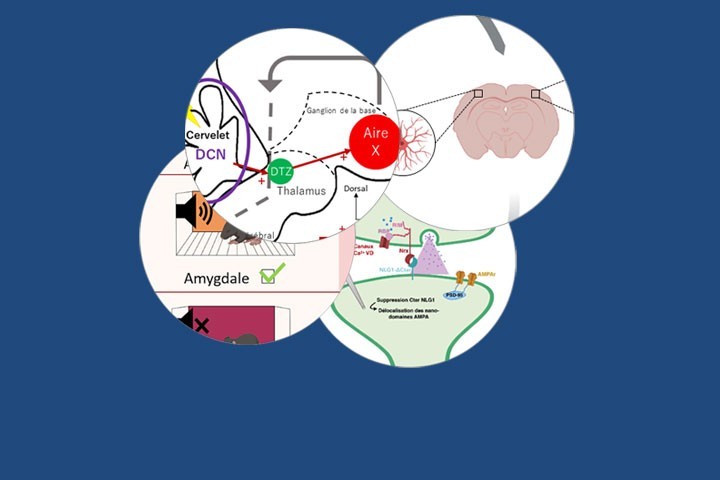
Websites by Master students
The Master Multipublic, coordinated by Muriel Darnaudéry and Thomas Michelet, was created three years ago with the aim of training students from various backgrounds (biology, biochemistry, psychology, sports, philosophy…) in neuroscience research. A project of mini blogs, made by students, was born within this frame. We met Muriel Darnaudéry…
What is the initiative behind this exercise?
Muriel Darnaudéry: I was looking to innovate in pedagogy for our UE Approche Expérimentale and I discovered the work of student blogs by Ijsbrand Kramer (professor at the European Institute of Chemistry and Biology). I was inspired by his experience and I was supported by Julien Baqué-Cazenave (post-doc) and Christopher Stevens (PhD monitor). I wanted this exercise to be useful to the students, to give them something to value over time, and to enable them to meet the researchers from Bordeaux. This work introduced them to important aspects of the scientific approach: the understanding of a research problem and the construction of hypotheses, but also the communication of research, which is a fundamental mission in science.
How are these websites articulated?
First of all, they are composed of the presentation of the theoretical framework and the scientific question. Then there is an expert summary, and a page dedicated to a technique or a focus on a key concept of the article. Finally, there is a visual (or video) synthesis, as it is done in many journals today.
Who is this work for?
Master students can share their blogs with their fellow students interested in neuroscience, but also with the scientific community who would like to have a preview of an article. I also hope that researchers will use the links in their Blogs to communicate their research.
Interview by Nathan Florent
Selection of websites (in french):
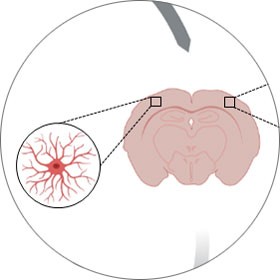 Astrocytes et traumatismes crâniens juvéniles, par Julia Chabbert et Simon Lecomte
Astrocytes et traumatismes crâniens juvéniles, par Julia Chabbert et Simon Lecomte
A propos de : Juvenile mild traumatic brain injury elicits distinct spatiotemporal astrocyte responses,
Tifenn Clément, Jeong B Lee, Aleksandra Ichkova, Beatriz Rodriguez‐Grande, Marie‐Line Fournier, Justine Aussudre, Michael Ogier, Elizabeth Haddad, Frederic Canini, Muriel Koehl, Djoher Nora Abrous, Andre Obenaus, Jerome Badaut,
Glia, 2020; 68: 528– 542
https://astrocytetraumacranien.blogspot.com/
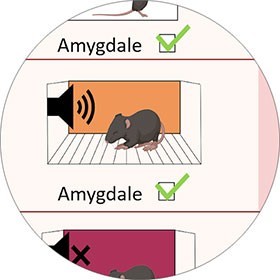 Impact de la Déficience en Transcortine sur la Mémoire de Reconnaissance et Contextuelle, par Juliette Montet et Estelle Schott
Impact de la Déficience en Transcortine sur la Mémoire de Reconnaissance et Contextuelle, par Juliette Montet et Estelle Schott
A propos de : Corticosteroid-Binding Globulin deficiency specifically impairs contextual and recognition memory consolidation in male mice.
Medeiros G. Lafenêtre P. Janthakhin Y. Cerpa J. Zhang C. Mehta M. Mortessagne P. Helbling J. Ferreira G. Moisan M.P. Neuroendocrinology, 2019
https://m1neuromulti.blogspot.com/
Le ce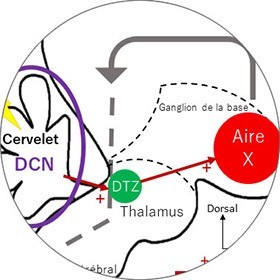 rvelet est impliqué dans l’apprentissage vocal chez le diamant mandarin, par Léa Caverzan et Léa Peltier
rvelet est impliqué dans l’apprentissage vocal chez le diamant mandarin, par Léa Caverzan et Léa Peltier
A propos de : A subcortical circuit linking the cerebellum to the basal ganglia engaged in vocal learning.
Pidoux L., Le Blanc P., Levenes C., Leblois A.
eLife, 2018 ; 25 (7)
https://vocal-learning-neurosciences.blogspot.com/
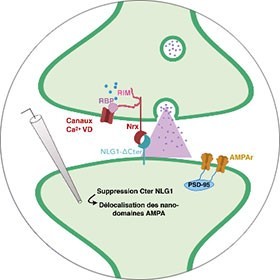 L’alignement synaptique, par Lola Hardt et Margaux Caperaa.
L’alignement synaptique, par Lola Hardt et Margaux Caperaa.
A propos de : Pre-post synaptic alignment through neuroligin-1 tunes synaptic transmission efficiency. Haas, K., Compans, B., Letellier, M., Bartol, T., Grillo-Bosch, D., Sejnowski, T., . . . Hosy, E. (2018).
eLife, 25 July 2018, Vol.7.
https://nlg1-neuroscience.blogspot.com/p/post1.html
More details about neuroscience master
Last update 19/06/20
